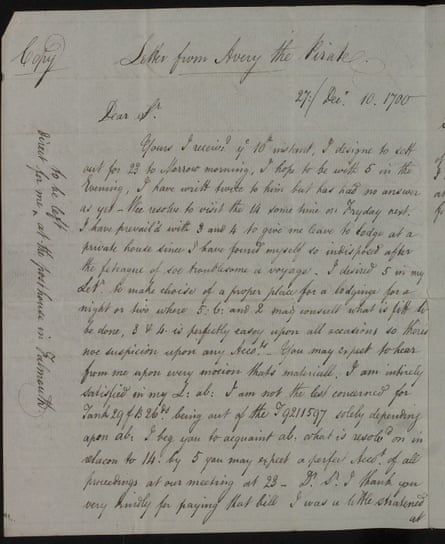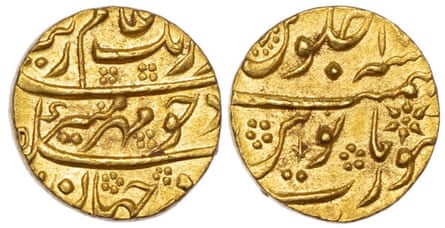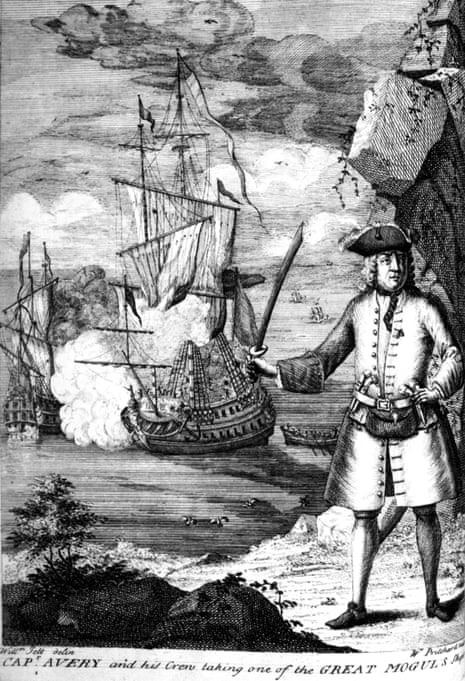In 1695, Henry Avery led his 160-strong crew to pull off the most lucrative heist in pirate history on the high seas, amassing gold, silver, sapphires, emeralds and diamonds worth more than £85m in today’s money. He became the most wanted criminal of his day but vanished without trace and was the stuff of legend for 300 years.
Now shipwreck explorers Dr Sean Kingsley and Rex Cowan claim to have solved what they call the longest cold case in pirate history: the “pirate king” had entered the service of the king of England, William III, as a spy.
Operating within a tangled web of royal espionage, conspiracy and subterfuge, Avery dedicated himself to protecting the English crown from dangers at home and abroad, apparently having exchanged part of his loot for a royal pardon.
The evidence lies in a previously unpublished coded letter written by “Avery the Pirate” from Falmouth in Cornwall. It had lain, forgotten, in a Scottish archive after being misfiled.

It is dated December 1700, four years after his disappearance following the looting of the ship belonging to the Mughal emperor Aurangzeb, then the world’s richest man.
Kingsley and Cowan discovered that the letter links Avery with one of the first great spy rings, believed to have included Daniel Defoe, the Robinson Crusoe author, and Thomas Tenison, the archbishop of Canterbury. Together, they were protecting Protestant England from the threat of “popery”, a Catholic invasion from France and an enemy seizing the throne.
The letter was found by Cowan’s late wife, Zélide, when the pair were tracking down sunken Dutch East India Company traders.
Kingsley said: “She knew she had stumbled across a once-in-a-lifetime historical treasure.”
Kingsley, a marine archaeologist who is editor-in-chief of Wreckwatch magazine and co-directing a Bahamas project to dive for lost pirate ships, spoke of the excitement of the letter’s discovery considering Avery’s importance in pirate history and our “eternal fascination” with such sea dogs.
Tantalisingly, half of the letter cannot be read, as it is in a numeric code, he said: “In 1700, who writes in code? British diplomats and spies.”
“We spent years trying to decipher Avery’s secret,” Cowan said. Various experts, including some who worked for the CIA, have tried in vain.
In one passage, Avery wrote: “I am not the least concerned for Tank 29 f B26 being out of the T9211597.” Its meaning remains secret.
Elsewhere he referred to meeting his contact that evening and working with “noe suspicion upon any Account”.
The letter notes that a reply was to be addressed to the “posthouse” in Falmouth. Kingsley said: “Falmouth in 1700 is where the post office is. That’s where the package ships go from. So if you want to be in a place to influence, intercept and stop threats, that’s where you might be.”
Kingsley and Cowan say that at that time Defoe was in Cornwall, posing as a shipwreck treasure diver named Claude Guilot. Defoe worked in intelligence for William III in 1692 and invented a numeric code for sending letters.

The letter’s recipient was Reverend James Richardson in Orange Street, London. Research reveals that it was the address of the capital’s first public lending library, set up by Tenison with Richardson as librarian. The address is so obscure that it is among several features that reassured Kingsley and Cowan that the letter is authentic: “No scammer would know to address a bogus letter there.”
One of the king’s aides saw Tenison illegally opening letters from Catholics that had been intercepted from the post office, describing him as a master forger – “so dangerous an art that, unless his Majesty commands him, I perceive he is desirous it should be discovered to nobody”.
The research, revealed in Kingsley and Cowan’s new book, The Pirate King: The Strange Adventures of Henry Avery and the Birth of the Golden Age of Piracy, suggests that for Avery piracy was about revenge. He was orphaned as a child and his governor had stolen his inheritance.
Theories about his fate ranged from his escape to Madagascar to being cheated out of his riches and dying penniless in Devon. Most of the infamous pirates were hanged or drowned at sea, but Avery simply vanished.
“More 18- and 19th-century books, ballads, poems and plays were written about Avery than any other pirate,” said Kingsley. “In inns and taverns, they sang ballads about him – he was a hero. To the authorities, he was the enemy of all mankind, wanted dead or alive. But they couldn’t get him.”
Pirates continue to capture imaginations today, he added: “They’re like working-class heroes. A lot of it is the swashbuckling ‘giving it all up and to hell with the world’. It was Avery who kickstarted the golden age of piracy.”
